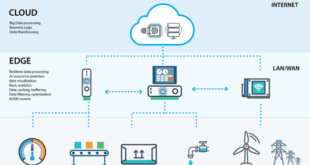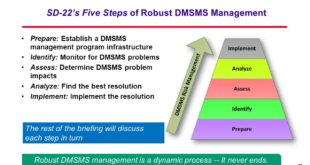Robots have already become an indispensable part of our lives. However currently, most robots are relatively rigid machines that make unnatural movements. Imagine a world where robots are not rigid, metallic machines confined to isolated spaces but soft and flexible beings capable of seamlessly integrating into our daily lives. This …
Read More »Edge Computing: The Key to Amplifying IoT Infrastructure and Empowering Military Missions
Introduction In today’s interconnected world, the Internet of Things (IoT) has become an integral part of our daily lives, transforming industries and revolutionizing how we interact with technology. As the number of connected devices continues to grow, so does the need for efficient and powerful infrastructure to support their operations. …
Read More »Nanosensors enable Nanodevices and NEMS to Nanorobotics
Introduction In the vast world of nanotechnology, where science meets innovation, nanosensors have emerged as a groundbreaking technology. These miniature devices possess the remarkable ability to detect and manipulate the tiniest particles and phenomena at the nanoscale. When combined with nanodevices and NEMS (Nanoelectromechanical Systems), nanosensors unlock new possibilities in …
Read More »Exploring Nanorobotics: Market Trends and Future Prospects
Introduction: Nanorobotics, the amalgamation of nanotechnology and robotics, is a rapidly evolving field that holds immense promise for revolutionizing various industries. By manipulating matter at the nanoscale, nanorobots offer unprecedented precision and control, enabling a wide range of applications across sectors. In this blog article, we delve into the exciting …
Read More »Booming Synthetic Aperture Sonar (SAS) Systems Market: Revolutionizing Underwater Mapping and Imaging
Introduction: The world beneath the surface of our oceans has long been shrouded in mystery and intrigue. However, thanks to advancements in technology, a new era of underwater exploration and mapping has dawned. At the forefront of this revolution is the rapidly growing market of Synthetic Aperture Sonar (SAS) systems. …
Read More »Unleashing the Potential of Indium Phosphide (InP) Technology: A Look into the Market and Applications
Introduction: Indium Phosphide (InP) technology is propelling the field of photonics into a new era, unlocking incredible possibilities for various industries. In this blog article, we will delve into the world of InP technology, exploring its market potential and the diverse applications where it is making a significant impact. From …
Read More »Unleashing the Power of Energy Harvesting: Technology, Applications, and Market Dynamics
Introduction: In our quest for sustainable and efficient energy solutions, we often overlook the untapped potential that surrounds us. Energy harvesting, a cutting-edge technology, aims to harness and utilize ambient energy sources to power a wide range of applications. This article explores the remarkable world of energy harvesting, delving into …
Read More »Soft Robotics Unleashed: Exploring the Future of Flexible Machines in Everyday Life
Introduction The world of robotics is undergoing a significant transformation, thanks to the emergence of soft robotics. This cutting-edge field focuses on developing robots with flexible and deformable bodies, bringing a new level of adaptability and integration into our daily lives. With materials like elastomers, gels, and textiles, engineers and …
Read More »Optical Modules and Transceivers: Unleashing the Power of High-Speed Optical Communications”
Introduction: In today’s digital age, where data transmission and connectivity are paramount, optical modules and transceivers have emerged as critical components for high-speed and reliable optical communications. These advanced technologies play a vital role in various applications, ranging from data centers and telecommunications networks to emerging technologies like 5G and …
Read More »How the Department of Defense’s DMSMS Management Mitigates Obsolescence and Material Shortages
Introduction: Diminishing Manufacturing Sources and Material Shortages (DMSMS) pose significant challenges for industries worldwide, and the Department of Defense (DoD) is no exception. As a major procurer and user of advanced technologies and equipment, the DoD faces the constant risk of obsolescence and material shortages. However, the DoD has implemented …
Read More » International Defense Security & Technology Your trusted Source for News, Research and Analysis
International Defense Security & Technology Your trusted Source for News, Research and Analysis



